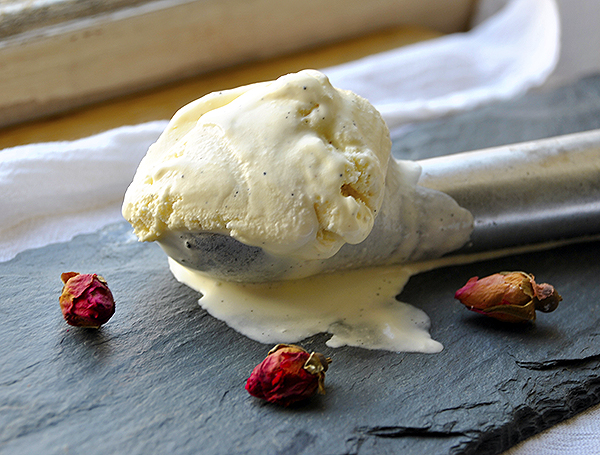
Ice cream isn’t going to save the day. Fear of change won. Racism won. Anti-semitism won. Anti-immigration won. Sexism won. Anti-LGBTQ won. All the -isms in the world won. And, I have a right to be scared and will stay mad. When the conservative trend was noticed in Europe and Turkey earlier this year, it was a comforting thought that we in the United States were slowly moving in a positive direction. But, when the majority of people used voting booths — similar to how the Klu Klux Klan wear hoods — to vote for a racist candidate on Tuesday, I’m wondering who among my white friends, are truly my friend.
Fear won this battle. There are new lessons and strategies being learned. It’s a new world order. There’s another friend in my social media, who wrote how she sees her white friends in a new light. An elder in my family said they never trusted them. Years ago, a famous fashion editor said, “…it’s their world, and we’re only living in it…” And, there are many friends who recently relocated to the South, and they woke up to find the majority of their neighbors voted for him.
My African-American sisters and I showed up at the polls to vote for her. As we’re reviewing other demographics’ voting statistics, it’s horrifying to learn how white women threw democracy under the bus. Fewer number of African-Americans didn’t vote in this election. A quarter percentage of Asian and Hispanic/Latinos voted for him. And, half of the country didn’t vote! Those are ugly facts. My best friend called early the next morning in tears, “…they don’t like us…” I told her to stop crying. We all knew they never liked us. And, yet when we talk about diversity, we include them. Shonda Rhimes shows are successful because of its diversity. When stock images of models are needed for my design work, I chose diversity. My community is the cultural foundation of America, and our civil rights and #BlackLivesMatter movements positively affects the quality of life for everyone. Obama’s campaign and policies are inclusive of everyone. This “Make America White Great, Again” hurts everyone, including the people who voted for him.
The media explains how the new president elect successfully tapped into an ignored demographic: Whites without college degrees who are financially struggling. I’m speculating there were plenty of whites with college degrees who voted for him, too. These are changing times, and technology is moving progress forward. What people don’t understand, is change is slow. The old needs to stay in the past. Are people truly romanticizing child labor, sweatshops and uneducated women? Or do people secretly want a modern American version of apartheid? Let’s be honest: Even if factories were to return to the United States, most of them are controlled by technology and the few jobs created require college degrees. The failure of politicians was not properly training people for the new technology. For whatever reason people voted for him — i.e. to disrupt politics in D.C. — it’s an example of how critical thinking skills are declining. If there is any progress, it is because of Obama’s long-term strategic planning, and the president-elect and conservatives will take credit for it. Honestly, Republicans use people with less education — it doesn’t mean they’re not smart — as a tool to advance the wealth of a few groups. #KeepAmericaUneducated and #KeepAmericanScared are policies enforced by most conservative politicians.
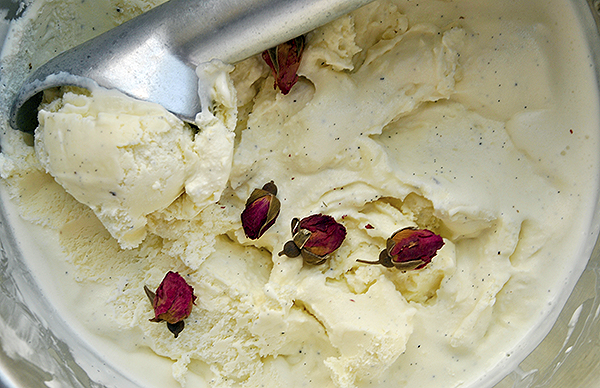
Most of my friends are liberals. It helps that I live in New York City. Since the start of the presidential race, I’m grateful my social media timeline had little to no Trump endorsements and racist comments. My timeline agreed with my values. There wasn’t a need to respond, except to “like or love” someone’s comment. After the shock of the election, my co-workers sat down to talk about what happened. My boss mentioned social media allows people to form groups similar to their beliefs. In addition, I’m thinking about how the media handled the news. Personally, the news is annoying. It’s driven by social media engagement, misleading headlines, twisted facts, and guests screaming their opinions. The media itself is marginalized: liberals read liberal news as conservatives read conservative news. Meanwhile, the media failed to uncover an underlying anger among the majority of Americans: the feeling of being isolated, scared of change and forgotten. Sure, there were lengthy stories about increased drug use, suicide rates and and unemployment in rural America, but few media sources failed to collectively address these issues to determine there was a major problem.
I’m wondering if the result of media organizations reducing budgets for lengthy news stories requiring extensive travel, legal services and research has impacted the quality of news. In college, we learned the media focuses on poverty in urban areas, because writers and media offices live close to low-income projects, which are mostly African Americans. It cost media outlets more money and time to visit a rural town with mostly poor whites. Hence, the face of poverty is someone of color. But, stereotypes are hurtful, including the oppressor. My code for ‘white people’ is ‘rich people.’ I assume most white people have money or a rich relative. This election has taught me how white people are the victim of their own stereotype: They’re supposed to be rich, but they’re not. In their arrogance, they feel ashamed to be equally poor as a stereotypical African-American low-income household. However, the average white Trump voter, statistically makes more money than other racial groups.
Thinking about this ‘so-called’ forgotten class of rural whites, and how they voted in this past election, I’m forced to emphasize with them: They’re scared of change. In their fear of not being able to meet the “rich white person” stereotype, they felt it was necessary to ignore the racist, vile comments of a presidential candidate. But, if they weren’t racist, they could’ve easily emphasize with any impoverished household around the world, in our country and in their community. I wonder if community organizations in rural communities reached out to urban social programs and organizations for ideas. But, Republican followers don’t believe in social programs or big governments.
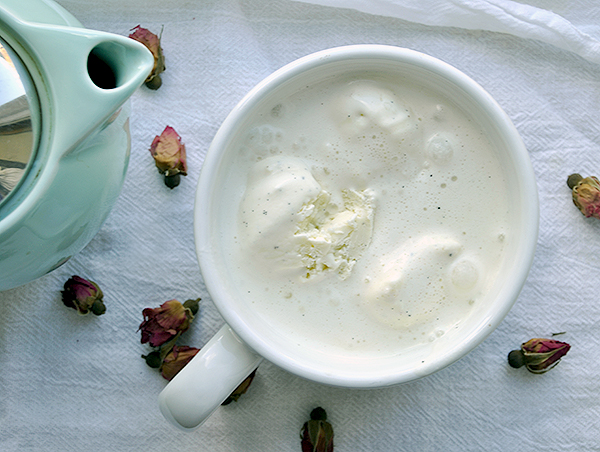
The fear of change is infuriating. As I walk around major cities, there are various languages and accents around me. My past and present co-workers are East Indian, West Indian, South American, Mexican, Jewish, Nigerian, Egyptian, Italian, British, Iraqi and so much more. They’re all American. Historically, it was Europeans who brought change to most people around the world. If a Catholic church can be built in an African country, what’s wrong with a Mosque being built in Italy? Western culture’s wealth is based on exploiting people and resources around the world — they should open their borders to anyone knocking. Matter of fact, low-birthrate Europe and too big America are so wealthy, migrants shouldn’t have to risk their lives crossing the Mediterranean Sea or America’s southern border. They should be welcomed with open arms, instead of labeling them as criminals.
There’s a joke in my office about the anti-immigration meaning behind “Make America Great, Again.” We shout out our culture’s contribution. A Jewish co-worker says, “…we’re taking back science and math.” I yelled, “…we’re taking back our music and food.” There’s isn’t a Hispanic- or Latino-American in our department, but they should take away chillies, tomatoes, chocolate, and vanilla. Ironically, vanilla is a flavoring typically associated with whiteness, but the tiny brown beans originate from Mexico.
In reality, the concept of race is based on pseudo-science. America’s culture is a summation of everyone around the world, and globalism can work for everyone. What’s sad are how many households — black, brown and white — are dealing with the same problem of living from paycheck to paycheck. It’s disheartening to see groups of people fighting, when they should’ve been talking about how to work together to solve a common problem: Increasing poverty. On a global scale, instead of vilifying low-wage workers employed in American and European factories that have relocated to developing countries, I wonder if a better solution would’ve been to globally expand unions to teach workers how to improve their workplace environment, benefits and increase wages.
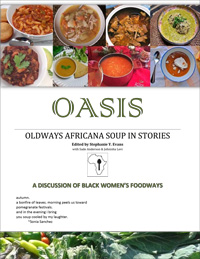
Earlier this year, Dr. Stephanie Y. Evans, a Professor and Department Chair of African-American Studies, Africana Women’s Studies & History (AWH) at Clark Atlanta University asked me to contribute to Oldways Africana Soup in Stories (OASIS), a collection of stories and recipes by women of the African Diaspora about nutrition and wellness. My contributing recipe to OASIS is Peach Soup with Vanilla Whipped Cream. The recipe is a tribute to my Grandmother and Aunt Gloria, and how they influenced me to believe in myself. An initial draft of the soup recipe included Vanilla Rose Ice Cream. As the recipe was being developed, the floral flavor was lost in the peach. Adding more rosewater to the ice cream and whipped cream would made the recipe taste soapy. However, the Vanilla Rose Ice Cream is lovely as a separate dessert.
OASIS describes what I wish my state of mind could be: Peace from this current vitriol. After the election, I visited a local business owned by a Hispanic-Afro sister to buy a candle. The store owner and I had an inspiring conversation, in which she told me despite the reality of racism in America, we — as Black people — have to start loving ourselves and depend more on each other. I don’t know if I still believe in the audacity of hope. Immediately after the election, my feelings were raw with anger. I thought the days of being considered a second-class citizen was a bit closer to coming to an end. When half the country votes for someone who denigrates minorities, immigrants and the LGBTQ community because of fear, my distrust in our country increased. And, there is nowhere for marginalized communities to go, because we’re American, too.
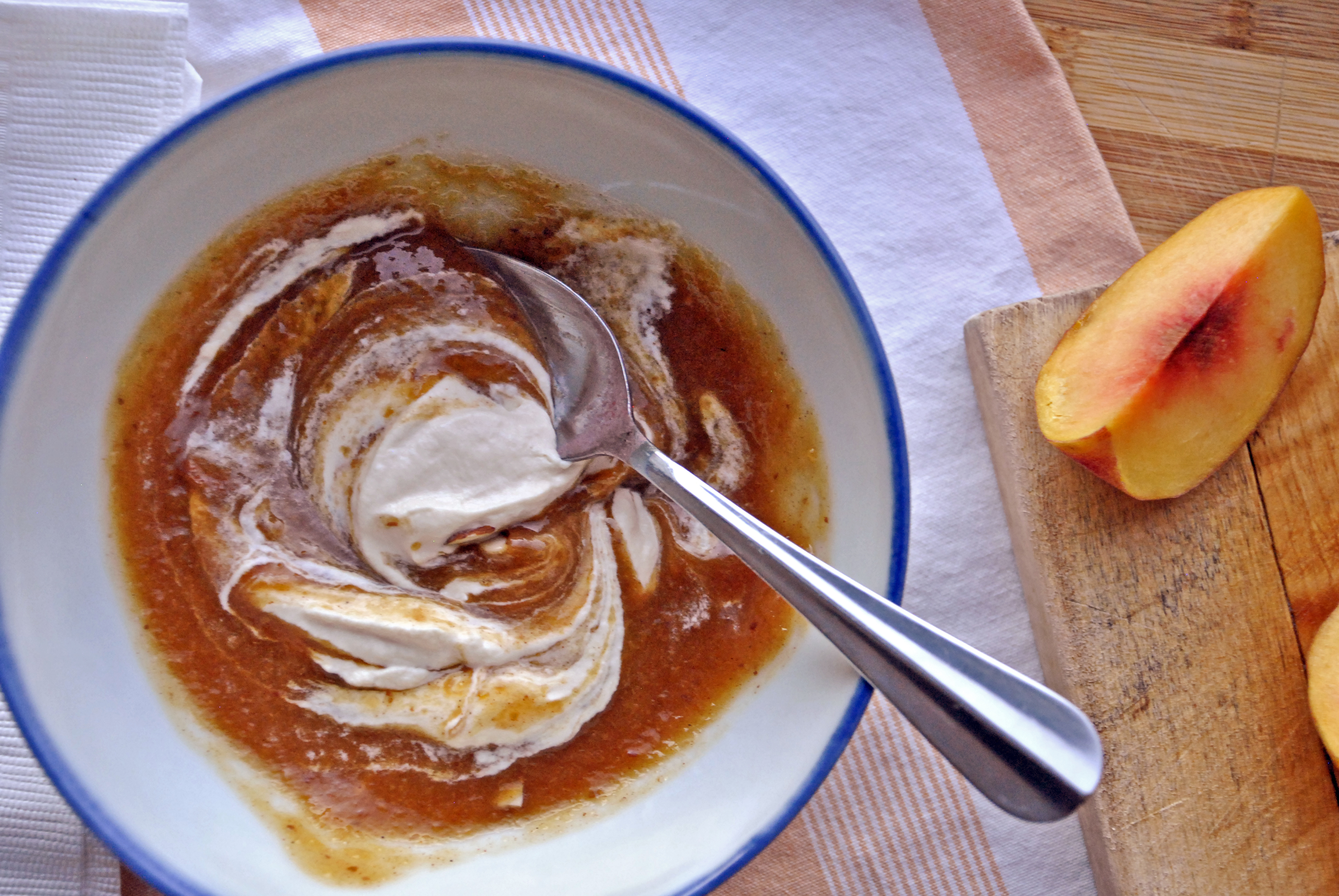
I wore a safety pin for one day, only to learn it’s a useless symbol. Although people of color have to fight for the right to live, in reality it’s up to American Whites for racism to die away and be forever vigilance against it. Their history with empathy isn’t nice. How can I expect American whites to protect my community’s interest, when they participate in gentrification to displace people, my community constantly reminds them to include more diverse voices in the food world, and #BlackLivesMatter is viewed as a terrorist organization. Historically, the majority of the white community don’t care about human rights issues, and they — including liberals — insist on defining racism to look less guilty of their past, even as their income and access to resources are better than most minorities. If White Americans truly cared, their idea of a vanilla white culture needs to end. It was never real in the first place. Privilege is a powerful addictive drug. It’s a wonderful high. It’s also destructive to everyone in its vicinity. Dear White People, we tell members in our communities to ‘wake up’ to racism. It’s time for you to wake up to the reality of your false delusions.
The Sunday after the election, our preacher started the sermon, “Bring the fight to them.” I’ve reread Martin Luther King, Jr. speeches about agape love. Both of these ideas remind me to continue working with white people who are scared. They’re scared, because they will be the minority in a few decades. Instead of showing love, they chose violence. I tell my friends — every nationality — this isn’t the time to whine and be a victim. Roll up our sleeves and figure out where and how to love these scary people. A white co-worker is organizing discussion groups with their white friends. A white barista said he is prepared to fight any thought and action of Muslim internment camps and registries (Perhaps, every nationality, race and religion should sign up for them if does become law). My friends and I are planning to attend the Million Women March in January. I’m learning how to repeatedly call my local politician’s office to encourage them to fight for our rights. Educate people on how #2018And2020 are equally important voting years.
There’s a population of white people who thought they were safe living in a bubble. Bubbles are fragile. And, it burst to reveal ugly racism. Good. I’m glad people are talking about it. Regardless of their hate, it takes intelligent people to educate racist people about real love, the painful truth about racial history and how we can work together to fight global corporate greed. Maybe the sliver of hope is how this could be racism’s last stand. The race started with our ancestors. Sometimes, the last part of a race is the most difficult. There are challenging times ahead of us, and we must win.
Ingredients
- 1 cup whole milk
- 1 pinch of sea salt
- 3/4 cup white sugar
- 2 large eggs
- 3 vanilla bean pods
- 2 cups heavy cream
- 1/4 tsp. dark rum
- 1/4 cup rose water
Directions
- Warm the milk in a medium saucepan over medium-low heat (when tiny bubbles appear along the edges, it’s ready — Don’t boil the milk). Whisk the eggs with the salt and sugar in a separate bowl.
- Slowly add a quarter-cup of warm milk to the egg mixture and continue to whisk. Repeat this step until their isn’t any warm milk left to make the custard.
- Pour the custard back into the saucepan and slowly heat over medium-low heat. Stir mixture constantly until it’s similar to liquid pudding. (When the mixture easily coats the back of a spoon, it’s ready — Don’t let the mixture boil!). This step takes about 10 to 20 minutes.
- Place custard in a bowl and tightly seal a cover over it. Let it chill in the refrigerator for a few hours or overnight, until it’s completely cold.
- Place a fine streive strainer over a large bowl. Pour chilled custard over the strainer. Using the back of a rubber spatula, press solids against the sides. Discard the solids.
- Using a paring knife, vertically split vanilla bean pods in half. Using the unsharp edge of the paring knife, scrape the beans from the pod. Add the beans to the strained custard.
- Whisk in cream, rum, and rose water to finish the custard.
- Add custard to the cold bowl of the ice cream maker and follow the manufacturer’s directions.
- Depending on the ice cream maker’s brand, when the custard is similar to the texture of a slightly firm soft-serve ice cream, place custard in a sealed container, and place it in the freezer. Chill until firm for a few hours.
- Cheers!
Notes
The Vanilla Rosewater Ice Cream is beautiful served affogato-style with fresh brewed strong black tea.
I just found your blog and completely agree with everything you said. This white 45 year old KY lady is a nasty woman and I proudly voted for HER! Your blog is awesome and appeals to my foodie heart! Keep up the good work!